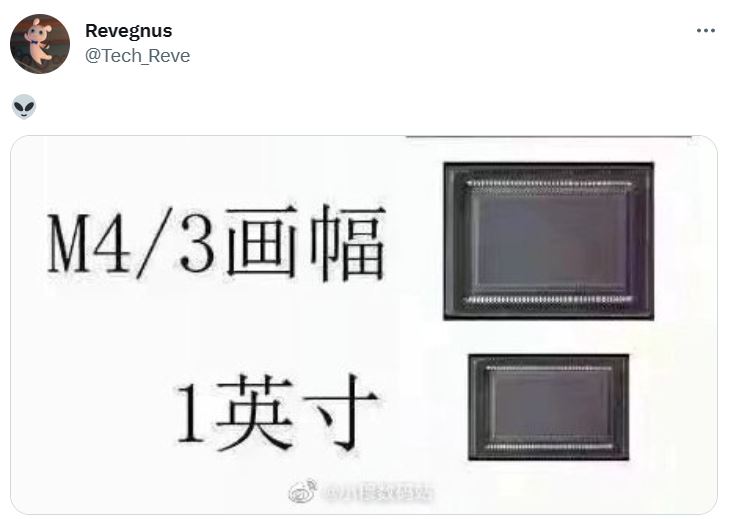Sony is a famous camera maker that’s also responsible for making camera sensors for smartphones. A few popular sensors are the IMX 766, IMX 890, and the IMX 989.
In recent years, we’ve seen significant strides with smartphone photography. The main cameras (1X) in the 23-28mm range still get all the attention from companies.
Update June 2: According to Digital Chat Station, the 1.33-inch sensor is huge and won’t be released anytime soon. However, we might see an improved version of the 1″ sensor, which could bring significant advancement. We can expect the 1.33-inch sensor to be released in Q1 2025.
The trend of larger sensor sizes primarily began in 2020, with Xiaomi using a 1/1.32″ 48MP sensor on the Mi 10 Ultra and Samsung using a 108MP 1/1.33″ sensor on the S20 Ultra.
Vivo also joined in with a 1/1.31″ sensor, and companies have made significant strides with sensor sizes ever since. In 2021, Xiaomi held the crown with the large 1/1.12″ GN2 sensor.
A breakthrough was in 2022, resulting from Xiaomi’s collaboration with Sony for an excellent sensor. The 12S Ultra was the first phone to use the IMX 989 sensor.
1″ sensors are tough to tune, and the focusing plane does get narrow. But there are several significant advantages to using a 1″ sensor.
First, we’ll get the megapixel versus sensor size debate out of the way. Judging from several comparisons, increasing the sensor size has many more benefits than arbitrarily jumping megapixel numbers.
While smartphone photography depends on software processing, the hardware also matters greatly. In comparison, the 200MP 1/1.3″ sensor performs poorly in low light.
Increasing the megapixel count decreases the effective pixel area if the sensor size isn’t increased. This results in aggressive artificial sharpening and fake texture boosts, which makes images appear unnatural and too over-processed.
Companies must increase the sensor sizes to increase photo and video quality, especially in challenging lighting. 1″ sensors are the norm for most flagships right now. Sensor sizes will allegedly get bigger next year.
According to a new report from Revegnus, Sony and Xiaomi are taking their collaboration even further.
They already co-developed the IMX 989 sensor and are working on a new project, a massive 4/3″ sensor. Approximately this is 1.33-inch in size, which will take outstanding photos with negligible noise, even in low light.
Sensor size has many benefits, like natural details and texture, reasonable noise control, and stellar depth of field. This is impossible to replicate with software. A 1.33″ sensor on upcoming smartphones will further bridge the gap between smartphone and DSLR photography.
Leica also collaborates closely with Xiaomi for lenses and image tuning, so the Xiaomi 14 Ultra could use the new 4/3″ Sony sensor. There’s only one major caveat: the edges of close-up photos with larger sensors.
Focusing on documents, signboards right in front of you, or QR Codes are things people do daily. As you increase the sensor and lens sizes, the focus plane narrows due to changing aperture values.
You have to keep moving back to focus on a subject. This is highly inconvenient, though variable aperture controls bokeh dropoff. If variable aperture technology improves in the future, companies can easily combat this problem.
However, the only cons are out-of-focus edges and narrow focus planes; arguably, the pros to having a larger sensor are greater.
The new 4/3″ sensor is 83% larger than 1/1.3″ sensors and 33% bigger than 1″ sensors. It’s also about 50% larger than the GN2 sensor. This is a much larger sensor than the 1″ sensor, which Vivo and Oppo will stick with, in 2024.
Also, Sony is working on another 1/1.3″ sensor alongside the giant one, but we’re unsure of the specifications. It’s mostly similar in size to the IMX803 sensor, at 1/1.3″. It could be a proper successor to the IMX707, and we might see it on the vanilla Xiaomi 14 model.





